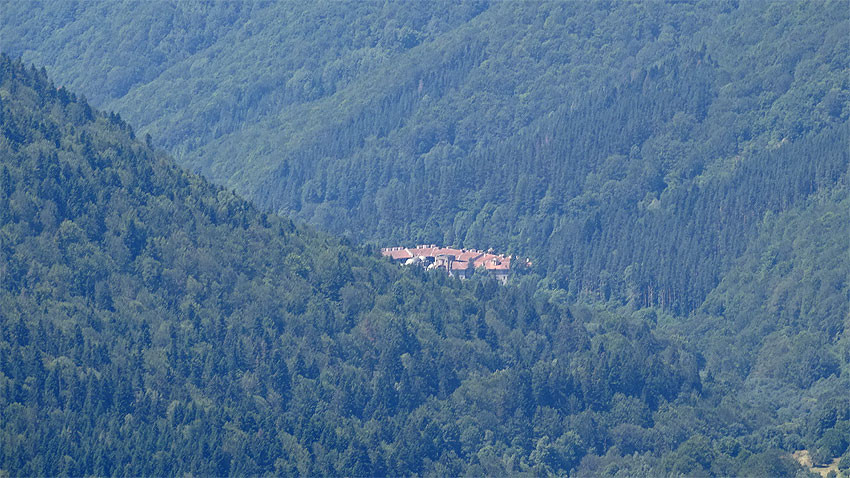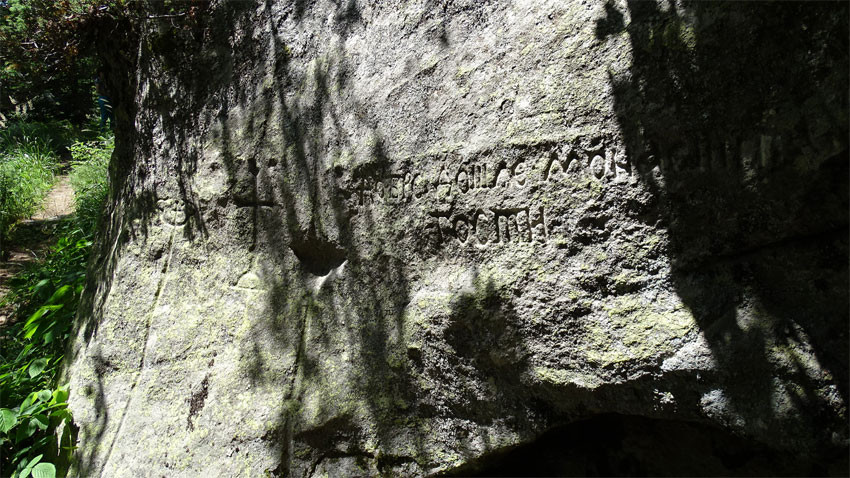On October 19, Orthodox Bulgaria honors the memory of its heavenly protector, St. Ivan Rilski. The name of the most famous monastery in this country, which is also a monument of UNESCO and has preserved the faith and spirituality of the Bulgarian people throughout the centuries, bears his name.
Its first abbot was St. Ivan Rilski, who lived for many years in seclusion in the depths of the highest Bulgarian mountain - Rila. The people and Church call him a miracle worker because of the many testimonies of miraculous healings.

 “What we know about him is not enough,” Priest Boyan Saraev says. "The times in which he lived are quite distant, as this is the end of the 9th and early 10th century. These were difficult times for the people and state. Corruption among the highest political circles was great; there were sects. And the activities of flesh and decay were universally spread. It is in such complex and difficult times that God sent St. Ivan Rilski to teach us the truths of the Holy Gospel.”
“What we know about him is not enough,” Priest Boyan Saraev says. "The times in which he lived are quite distant, as this is the end of the 9th and early 10th century. These were difficult times for the people and state. Corruption among the highest political circles was great; there were sects. And the activities of flesh and decay were universally spread. It is in such complex and difficult times that God sent St. Ivan Rilski to teach us the truths of the Holy Gospel.”
Ivan Rilski denied the pursuit of wealth and pointed out greed and envy as the greatest vices that detract from spirituality. After accepting monasticism, his desire to dedicate his life to the service of God took him to Rila Mountain. Far away from the vanity of the world, he devoted himself to prayers, and when Tsar Peter himself went to him with gifts including fruit and gold, the hermit did not let him close to himself, but only bowed to the Tsar from afar. The king sent the generous gifts, but the holy old man accepted only fruit. In a letter, he thanked the king for his generosity, turned down his invitation for a meeting and sent his advice to him. Among them is the wise covenant for all those who seek to rule the country: "He who wants to be first among all, must be a servant to all."
St. Ivan Rilski’s humility was an example to many and in spite of the solitary life he led, he became famous among Orthodox and other believers as the link of God to all in need. People constantly sought his support and wise guidance. Known for his purity and good-heartedness, people started calling him an earthly angel and a heavenly resident when he was still alive. After his death in 946 he was buried close to the monastery he established.
Having learned of the death of the hermit, Tsar Peter ordered his relics to be transferred to the town of Sredets, present-day Sofia. When the grave was opened, the saint’s disciples saw an incorruptible body and smelled pleasant aroma. They carried the relics on October 19th and from that day on, each year, the Bulgarian church solemnly commemorates the saint.

After Byzantine scholar Georgi Skilitsa was healed, thanks to the saint’s heavenly help, he wrote the story of Ivan Rilski’s life, as well as eight canons of scripture dedicated to him. During the Ottoman domination, in 1469, monks from the Rila Monastery sought permission from Sultan Murad II and returned the relics to the Rila Monastery. To this day, they are helping all those who come with faith:
“God sometimes works miracles in front of non-believers in order to open their spiritual eyes," Priest Sarev says. "In order for people to see that one or another saint has a great power of healing and working miracles, so that those who have not yet believed could believe. The miracles he does did not stop when he was alive and haven’t stopped after his death.”
One of the great miracles of the saint was during the Balkan War in the late autumn of 1912. On the way to the Ottoman capital of Istanbul, near Çatalca, he appeared during the fierce battle with the Arab cavalry to inspire the courage of Bulgarian soldiers. In the book "The Miracles of St. Ivan Rilski and the Miraculous Icon of the Holy Mother of God ‘Osenovitsa’ in Rila Monastery” Archimandrite Kliment Rilets carefully and in detail describes the stories of all those who received help from the Rila miracle worker.
English: Alexander Markov
Photos: archiveThe head of a statue has been unearthed during excavations in the great canal of the ancient city of Heraclea Sintica located in Southwestern Bulgaria, close to the town of Petrich. The head longs to the statue that was discovered a few days ago..
From 23 to 28 September, Sofia and Vidin will host the 7th International Conference on the Roman Danubian Provinces on the theme "Frontier Landscapes along the Danube", reports BNR Vidin. The initiative was taken by the University of Ferrara, Italy...
The independence of Bulgaria was proclaimed on 22 September, 1908. After the most audacious independent act in Bulgarian history – the unification of Eastern Rumelia with the Principality of Bulgaria – Bulgarians once again demonstrated the power of..
The Museum of the Jewish People in Tel Aviv , Israel, today commemorates the 130th anniversary of the birth of Dimitar Peshev, a righteous man of the..
The Feast of the Epiphany - the entry of the Theotokos into the Temple - is one of the oldest and most revered feasts in the Orthodox world. It was..

+359 2 9336 661
